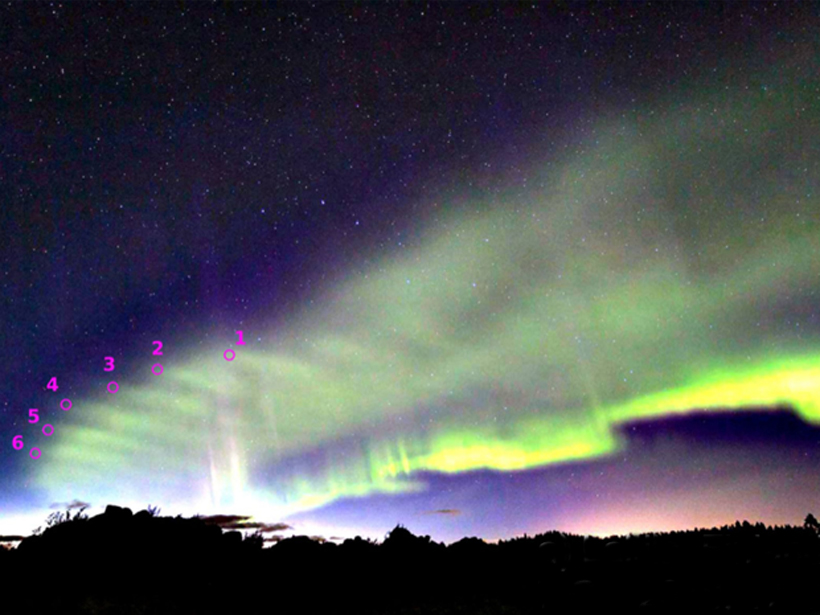Source: AGU Advances
Finding new forms of Earth’s aurora—the colorful light display resulting when charged particles from the sun interact with the magnetosphere—is rare. However, with improved digital photography and communications, researchers and citizen scientists have recently collaborated in making new discoveries, including last year when STEVE, a pinkish optical emission produced by sub-auroral ion drifts, was revealed.
Now, Palmroth et al. [2020] have identified a new type of emission. Citizen scientists recorded the sight at multiple locations in Scandinavia in digital photographs near the 2018 fall equinox. These fluorescent ripples in the atmosphere, here named dunes due to their rolling shape, recur every 45 km at a height of around 100 km.
The researchers developed a parallax-based method to show that the emissions are indeed an atmospheric phenomenon, perhaps related to previously detected atmospheric phenomena at lower latitudes. After their original discovery, researchers and citizen scientists organized a coordinated campaign to confirm and quantitatively analyze the previous sightings.
Citation: Palmroth M., Grandin M., Helin M., Koski P., Oksanen A., Glad M. A., et al. [2020]. Citizen scientists discover a new auroral form: Dunes provide insight into the upper atmosphere. AGU Advances, 1, e2019AV000133. https://doi.org/10.1029/2019AV000133
—Mary Hudson, Editor, AGU Advances
Text © 2020. The authors. CC BY-NC-ND 3.0
Except where otherwise noted, images are subject to copyright. Any reuse without express permission from the copyright owner is prohibited.

